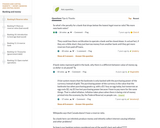
How reserve requirements limit how much lending a bank can do. Created by Sal Khan.
- Subject:
- Economics
- Social Science
- Material Type:
- Lesson
- Provider:
- Khan Academy
- Provider Set:
- Khan Academy
- Author:
- Sal Khan
- Date Added:
- 01/17/2012

How reserve requirements limit how much lending a bank can do. Created by Sal Khan.
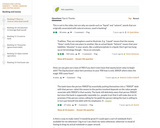
Seeing how reserve ratios limit how much lending I can do. Created by Sal Khan.

There are many reasons to keep your money in a bank or credit union. The October 2020 issue of Page One Economics®: Focus on Finance describes what banks, credit unions, and online banks are and outlines things to consider when choosing where to have an account and what type of account to have.
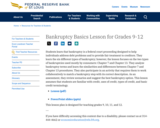
Students learn that bankruptcy is a federal court proceeding designed to help individuals address debt problems and to provide fair treatment to creditors. They learn the six different types of bankruptcy; however, the lesson focuses on the two types of bankruptcies used mostly by consumers: Chapter 7 and Chapter 13. They analyze bankruptcy terms and learn the similarities and differences between Chapter 7 and Chapter 13 procedures. They also participate in an activity that requires them to work collaboratively to match a bankruptcy step with its correct description. As an assessment, they review scenarios and suggest the best bankruptcy option. This lesson assumes that students are familiar with credit, uses of credit, types of credit, and basic credit terminology.

Many people find themselves in financial trouble, but it is good to know there are options available should you need serious financial help. The April 2018 bonus edition of Page One Economics: Focus on Finance discusses earning income, budgeting, late payments, and collections. It introduces the basics of legal protection offered in the form of bankruptcy and describes some potential consequences of filing a bankruptcy case.

Payday and title lenders, pawn shops, check-cashing services and prepaid cards can be convenient and valuable financial services, similar to those offered by traditional providers of such services—banks and credit unions. What are the costs and benefits of using alternative financial services, as well as of going to a bank or credit union?
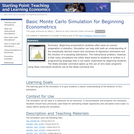
Beginning econometrics students often have an uneven preparation in statistics. The simulation gives students a clearer understanding of the behavior of OLS estimators.
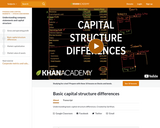
Understanding basic capital structure differences. Created by Sal Khan.
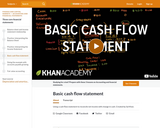
Using a cash flow statement to reconcile net income with change in cash. Created by Sal Khan.

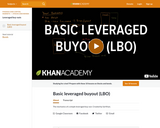
The mechanics of a simple leveraged buy-out. Created by Sal Khan.
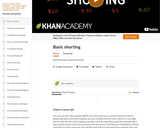
When you short a stock, you are betting that the price of the stock is going to decrease. In this video, learn about the basics about shorting stocks. Created by Sal Khan.
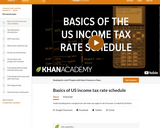
Understanding that a marginal tax rate does not apply to all of income. Created by Sal Khan.
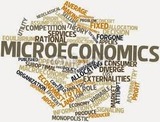
This paper enable to have a better understanding of microeconomics. It helps the student to apply the concepts in real life.

This audio excerpt captures the beginning of Bayard Rustin's 1967 "Freedom Budget" speech, describing the social and economic impact of racism over time.
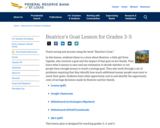
In this lesson, students listen to a story about Beatrice, a little girl from Uganda, who receives a goat and the impact of that goat on her family. They learn what it means to save and use estimation to decide whether or not people have enough money to reach a savings goal. They also work through a set of problems requiring that they identify how much additional money people must save to reach their goals. Students learn what opportunity cost is and identify the opportunity costs of savings decisions made by Beatrice and her family.
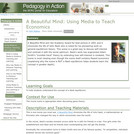
A Beautiful Mind won the Academy Award for best picture in 2001 and it chronicles the life of John Nash who is noted for his pioneering work on general equilibrium theory. This scene is a great way to discuss self-interest and contrast it with the social optimum. Nash's work has augmented Adam Smith's "invisible hand" theory by extending how self-interest is modeled. This scene is must viewing even though the scene itself contains flawed economics (explaining why the scene is NOT a Nash equilibrium helps students learn the concept in greater depth).
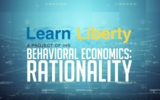
Economics is built on the premise that humans act rationally, but everyone behaves irrationally some of the time. Is it possible that human irrationality nullifies economic theory? Join Professor Antony Davies of Duquesne University and Erika Davies of George Mason University as they take you on a crash course of behavioral economics, discussing topics like rational choice, heuristics, nudging, and public choice economics.

This resource is a video abstract of a research paper created by Research Square on behalf of its authors. It provides a synopsis that's easy to understand, and can be used to introduce the topics it covers to students, researchers, and the general public. The video's transcript is also provided in full, with a portion provided below for preview:
"A growing number of governments around the world are using behavioral science to inform public policy. So-called behavioral public policy leverages the scientific process to suggest how government decisions may or may not effect social change. Though rapidly growing, the discipline is still in its infancy. But opportunities for breaking through exist. Reporting in Behavioural Public Policy, members of the Behavioural Insights Team based in London and New York review those opportunities and the challenges that persist in this arena. As part of the world’s first government unit dedicated to using behavioral science, the team offers a valuable take on why behavioral science works and how it might be made to work for more governments worldwide. Though adapted to life outside of academia, behavioral public policy still faces many familiar challenges. Among them is the replication crisis that has gripped the field of psychology..."
The rest of the transcript, along with a link to the research itself, is available on the resource itself.

In 2008, the Beijing Urban Design Studio will focus on the issue of Beijing’s urban transformation under the theme of de-industrialization, by preparing an urban design and development plan for the Shougang (Capital Steel Factory) site. This studio will address whether portions of the old massive factory infrastructure can be preserved as a national industrial heritage site embedded into future new development; how to balance the cultural and recreational value of the site with environmental challenges; as well as how to use the site for urban development. A special focus of the studio will be to consider development approaches that minimize energy utilization.
To research these questions, students will be asked to interact with clients from the factory, local residents, city officials and experts on transportation, environment, energy and real estate. They will assess strategic options for the steel factory and propose comprehensive plans for the design and development of the brownfield site.